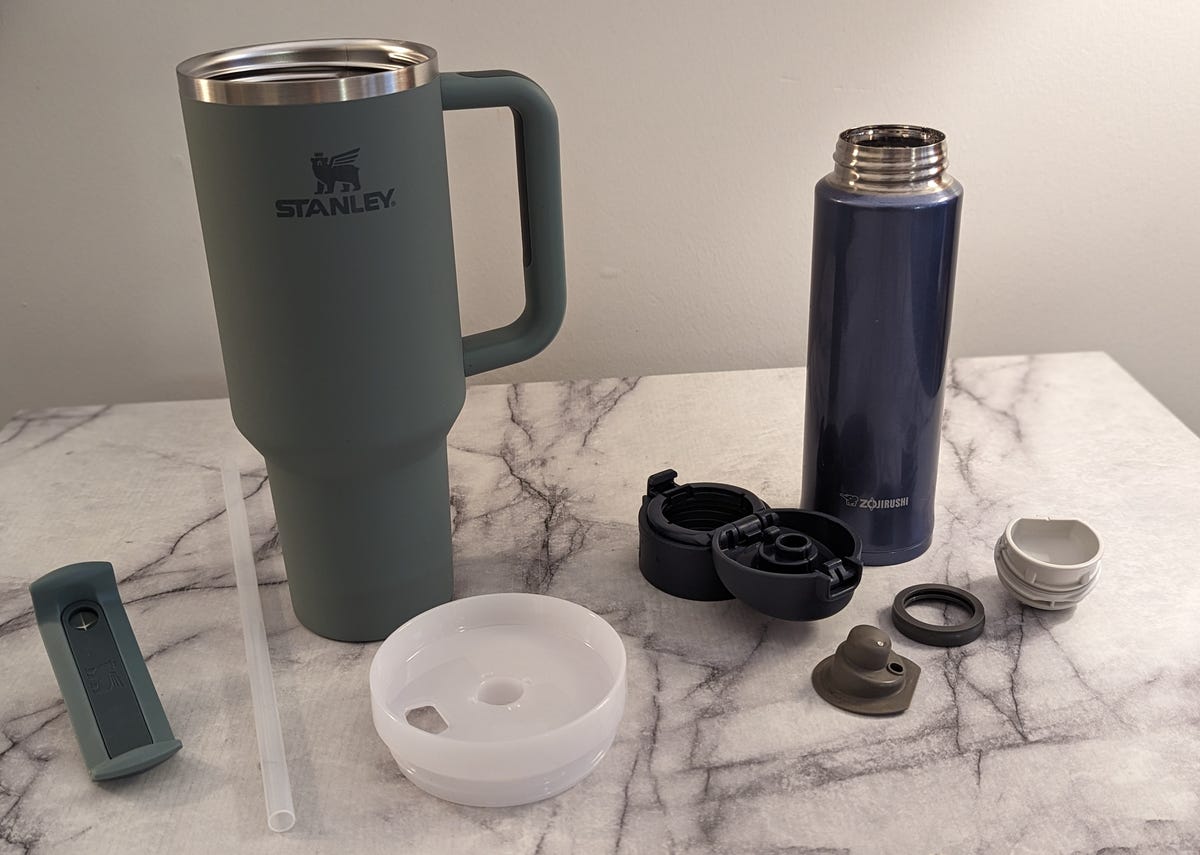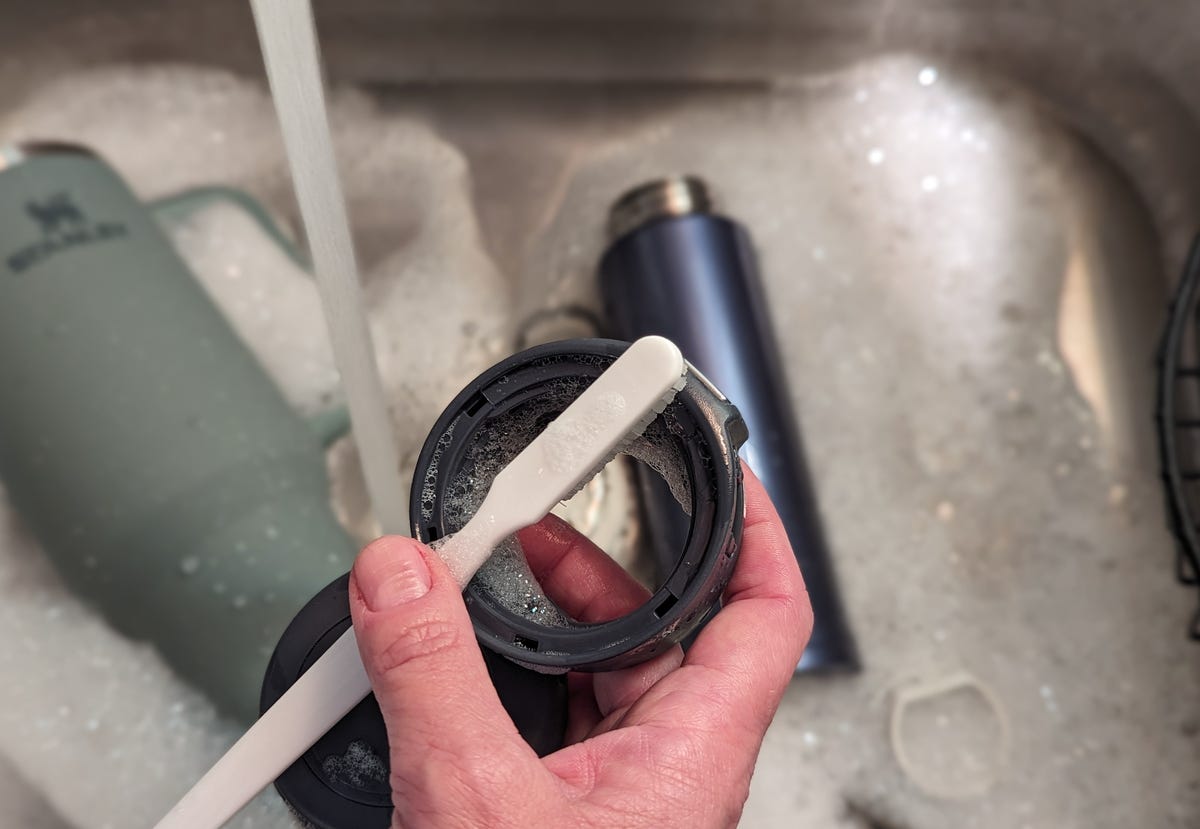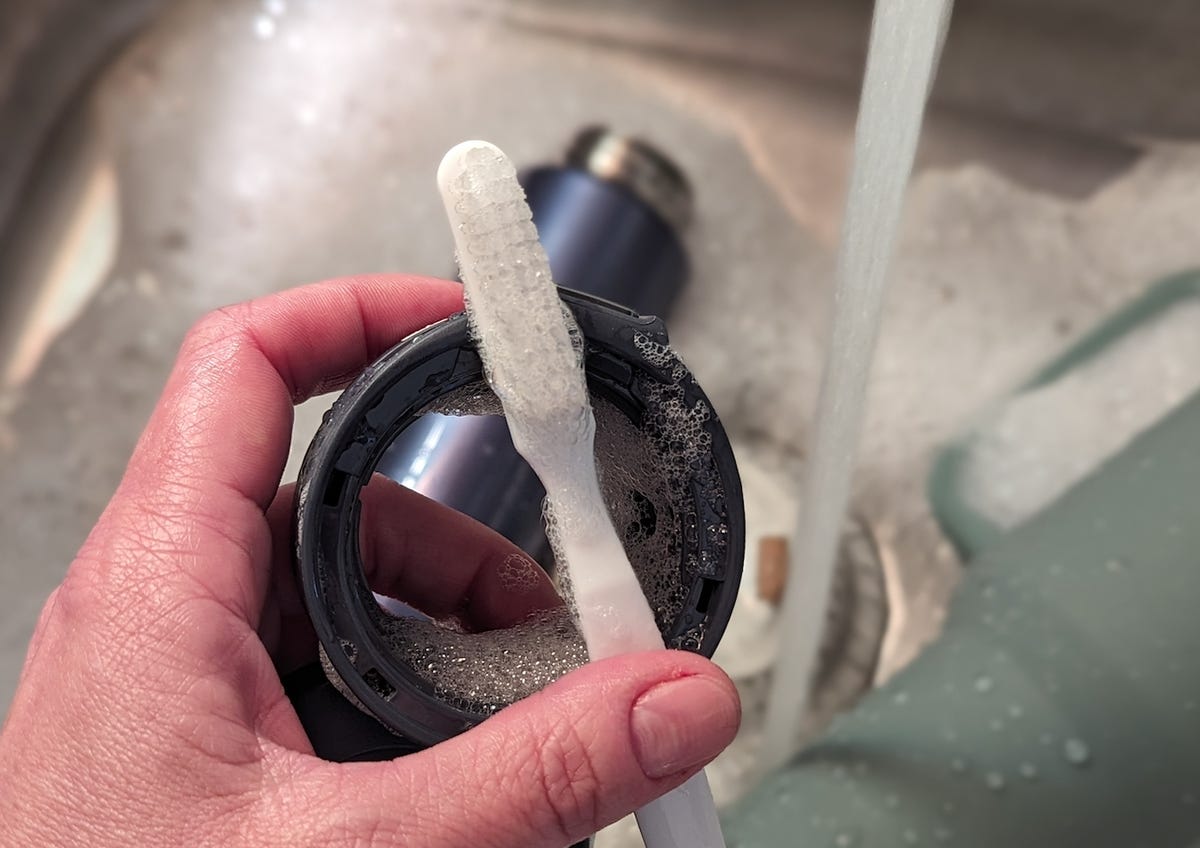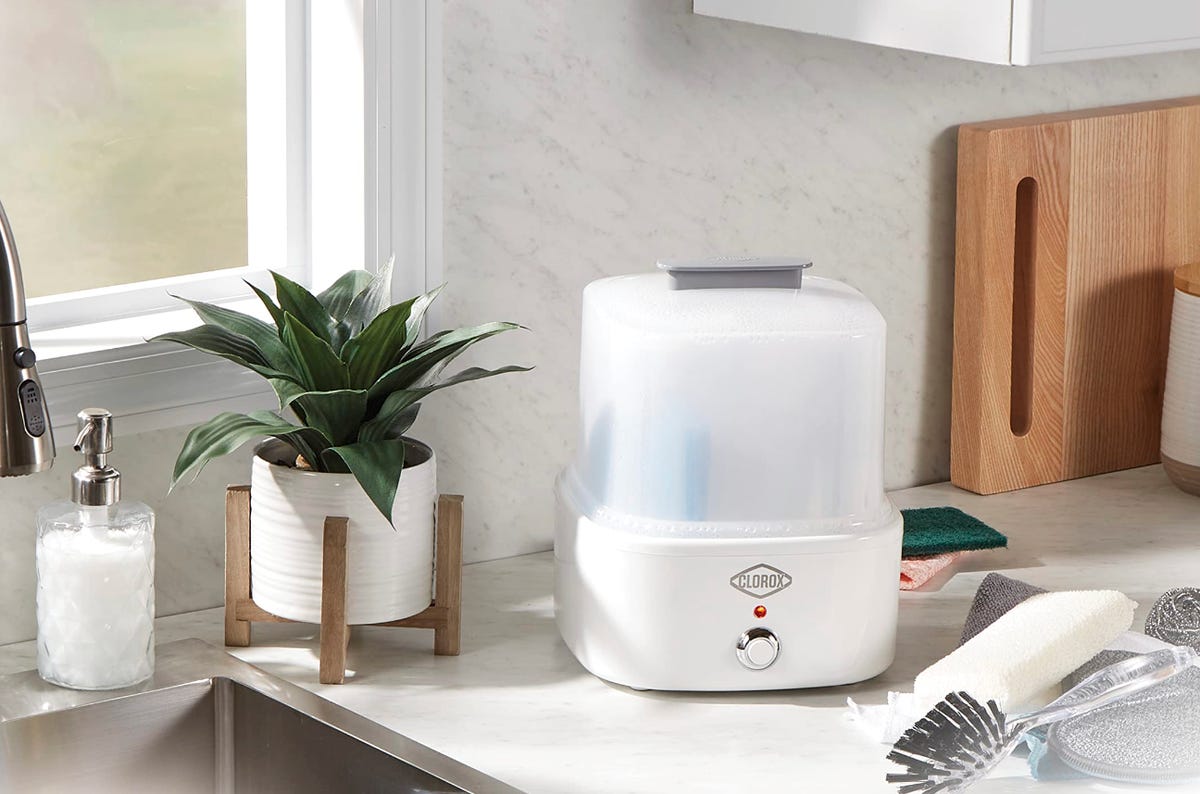Whether or not you confess to hopping on the Stanley cup bandwagon of late – our own Katie Teague thinks they’re worth the hype — chances are good you possess some sort of reusable, insulated vessel for keeping yourself hydrated or caffeinated.
Unless you’re one of the most diligent among us, chances are good that you haven’t necessarily cleaned your vessel after every use — I mean, especially for the almighty Stanley, it’s just water, right? Or maybe you’re in the habit of giving it a rinse and letting it dry on the regular, but how often do you actually disassemble it for a thorough cleaning?
Insulated mugs can harbor numerous microorganisms such as various bacteria and even mold when not cleaned appropriately. “Cleaning Stanley cups regularly is essential to keep them clean and safe to drink from,” says Sabrina Tretyakova, of Fotador, a cleaning technician certified through the International Sanitary Supply Association. “Factors that influence the growth of bacteria and mold on Stanley cups include moisture, the presence of nutrients from the beverages themselves, and lack of regular cleaning,” she says.

The kids are hydrating. Stanley’s oversized travel water mug has gone mega-viral.
Problematic areas of your Stanley cup or insulated mug
There’s more than meets the eye when it comes to the various parts of your Stanley cup or insulated mug, and it’s not enough even if you’re regularly washing the inside of the cup and the sipping mechanism. Here are several problematic areas that Tretyakova identified:

The first step is to completely disassemble your Stanley cup so you can clean all its pieces.
Under the spout protector
Depending on what type of drinking vessel you have, this is easy to miss as it’s not a piece that your mouth directly touches, though it’s frequently coming in contact with the spout that your mouth touches, allowing bacteria and mold to accumulate.
Straw and lid
“These parts are prime locations for bacterial growth because they come into direct contact with your mouth and the beverages,” says Tretyakova. “The bacteria can be oral flora, which lurks in your mouth and gets transferred to the cup.” (If the words “oral flora” didn’t send you directly to the kitchen sink for immediate deep cleaning, I don’t know what will.)
Rubber seals
Certain models have rubber seals on the lids to help keep them closed tightly, but this is another area that Tretyakova identified as being troublesome when it comes to hygiene. “The areas under the seals are vulnerable to mold contamination if not cleaned properly,” she says. “Usually, this area gets infested with black mold, also known as Stachybotrys chartarum.” (Choose your own adventure: Which is more scary, oral flora or black mold?)
How to clean your Stanley cup or insulated mug by hand
Here are Tretyakova’s recommended best practices when it comes to cleaning and maintaining your insulated mug.

An old toothbrush is perfect for cleaning those troublesome nooks and crannies.
1. Regular rinsing
“Rinse the mug and the lid under hot water shortly after drinking the beverage,” says Tretyakova. “It helps remove any residue that could potentially harbor bacteria.” This isn’t in place of actually cleaning the mug, but is a good habit to get into, especially if you’re in a work or public environment and aren’t immediately able to attend to it.
2. Thorough cleaning
First, disassemble your Stanley Cup or other insulated mug completely so that there are no hidden areas that may harbor moisture and can encourage bacterial growth. Tretyakova recommends mild dish soap and warm water to soak the removable parts of the cup for 15 minutes. (Throwing the cup in there itself is also a good idea while you’re at it.)
Scrub the parts with a clean toothbrush or bottle brush, and finish by rinsing the parts with warm water. You can hand dry any parts that are easily accessible with a clean towel, but other parts such as straws will have to air dry.

We’re going deep to explain how to best clean your new Stanley cup.
3. Avoid the dishwasher
The Stanley cup and some other insulated mugs may be dishwasher safe, but using the dishwasher isn’t necessarily recommended for the best cleaning. “The dishwasher may not reach all the nooks and crannies on the lid of your mug,” says Tretyakova, who advises regular hand washing for the best outcome.
4. Periodic deep cleaning
Tretyakova recommends periodic deep cleaning in addition to daily cleaning, which can be done with distilled white vinegar and baking soda.
Read more: These Pantry Staples Will Melt Ugly Cookware Stains in Minutes
Steam clean for additional peace of mind

Clorox’s $50 compact steam cleaner will give your mug an even deeper clean.
For those about to swear off insulated mugs forever, take note: There is more that can be done to keep your cup clean and sanitized. Similar to bottle cleaners that are sold as baby products, steam sanitizers are available for a multitude of home uses, of which insulated mugs are prime candidates.
“Rubber sealing rings and slide openings of lids can trap moisture, even after they have been washed, and straws are challenging due to their length and shape,” says Nicole Backus, a product manager for Clorox Home Appliances. Where moisture is the problem, moisture in the form of steam can also be the solution.
“Sanitizing with steam is especially helpful, as steam can penetrate cracks and crevices where scrub brushes, soap and water cannot reach,” Backus says. “Sanitizing even clean parts of your insulated mug keeps bacteria from growing on surfaces of the cup, inside and out, top to bottom.”
Sanitizing should be done after washing, not in place of, but for extra peace of mind, you can get a sanitizer for home use such as the Clorox 2-Tier Steam Sanitizer for as little as $50. (You spent that on the Stanley already, so consider it insurance.)

